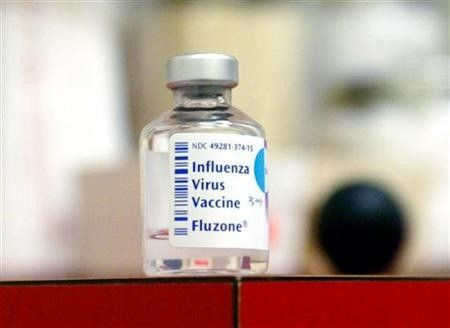Lowering Flu Shot Costs Could Bump Up Vaccination Rates

Even though flu vaccine fears are causing spot shortages in some areas, if Americans behave as they normally do, fewer than half of them will get vaccinated this flu season.
After the U.S. Centers for Disease Control and Prevention warned earlier in January that this flu season was shaping up to be severe, vaccination rates have spiked. Free flu shot clinics from Arizona to Boston have been swarmed by people eager to find protection against this year’s crop of bugs, a mixture that contains the subtype H3N2, associated with severe flu seasons in the past.
But despite the warnings, most Americans will probably not get the flu shot this year. Last flu season, only about 42 percent of the population got vaccinated.
A CDC survey of nearly 12,000 people that looked at the 2008-2009 flu season yielded even more dismal results: Just 28.2 percent of adults between the ages of 18 and 64 got vaccinated. Coverage for Hispanic adults was especially low compared to other ethnic groups.
“Numerous factors play a role in these racial/ethnic disparities, including differences in attitudes toward vaccination and preventive care, propensity to seek and accept vaccination, variations in likelihood that providers recommend vaccination and differences in quality of care received by racial/ethnic populations,” the CDC wrote.
Flu shot costs are generally somewhere around $25 for adults, though in many cases insurance will pick up the whole tab. But does the cost of a flu vaccine -- even if it’s a small cost -- impact vaccination rates?
In a paper published last week in the journal PLoS ONE, Wake Forest University Economists used a multiplayer online game that simulates the spread of an infectious disease to see how people would respond to virtual epidemics. They found that, unsurprisingly, lowering the cost of self-protection (read: vaccines) increases the rate at which people opt to choose the safe option.
Vaccine development and production is costly. Months before the start of flu season, scientists have to guess which flu virus strains will be the most common in the next year. The selected viruses have to be isolated, purified and grown inside fertilized chicken eggs (or dog cells), then turned into millions and millions of doses. Research into more effective vaccines and universal flu vaccines that wouldn’t have to be reformulated every year is costly too.
But the costs of vaccine production and distribution pale in comparison to the economic toll of people getting sick. The total economic costs of influenza in a single season in the U.S. -- accounting for both health care costs and lost productivity -- are somewhere around $870 billion, according to the CDC survey.
The U.S. might look northward to the Canadian province of Ontario, where flu vaccines are free to anyone over the age of six months. A 2010 study of the program in the journal PLoS Medicine found that it was more cost-effective than programs in other provinces. Though the universal flu vaccine program cost about twice as much as a targeted program, it reduced influenza cases by 61 percent and mortality by 28 percent from what was expected and cut health care services costs by 52 percent.
© Copyright IBTimes 2024. All rights reserved.





















